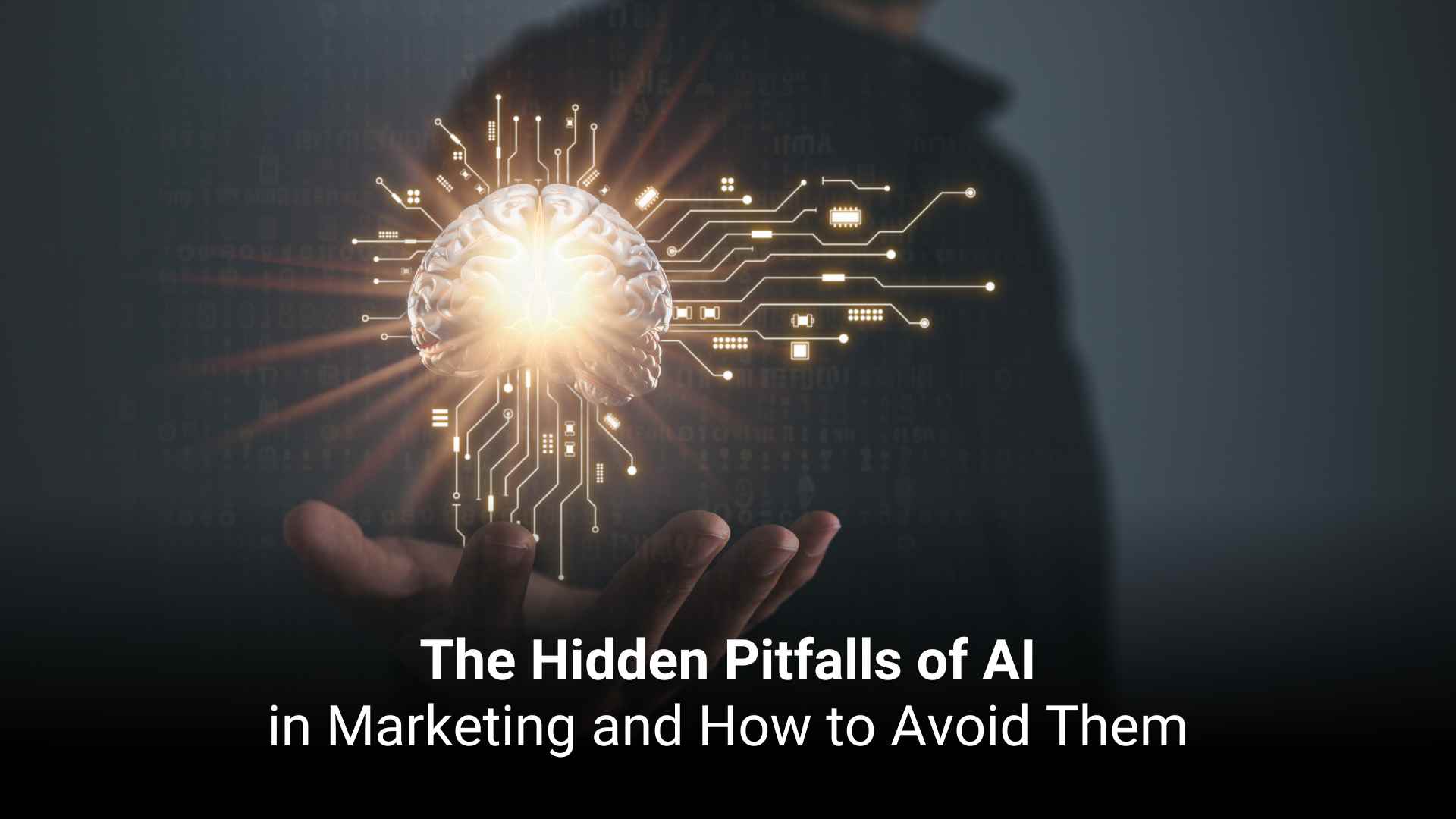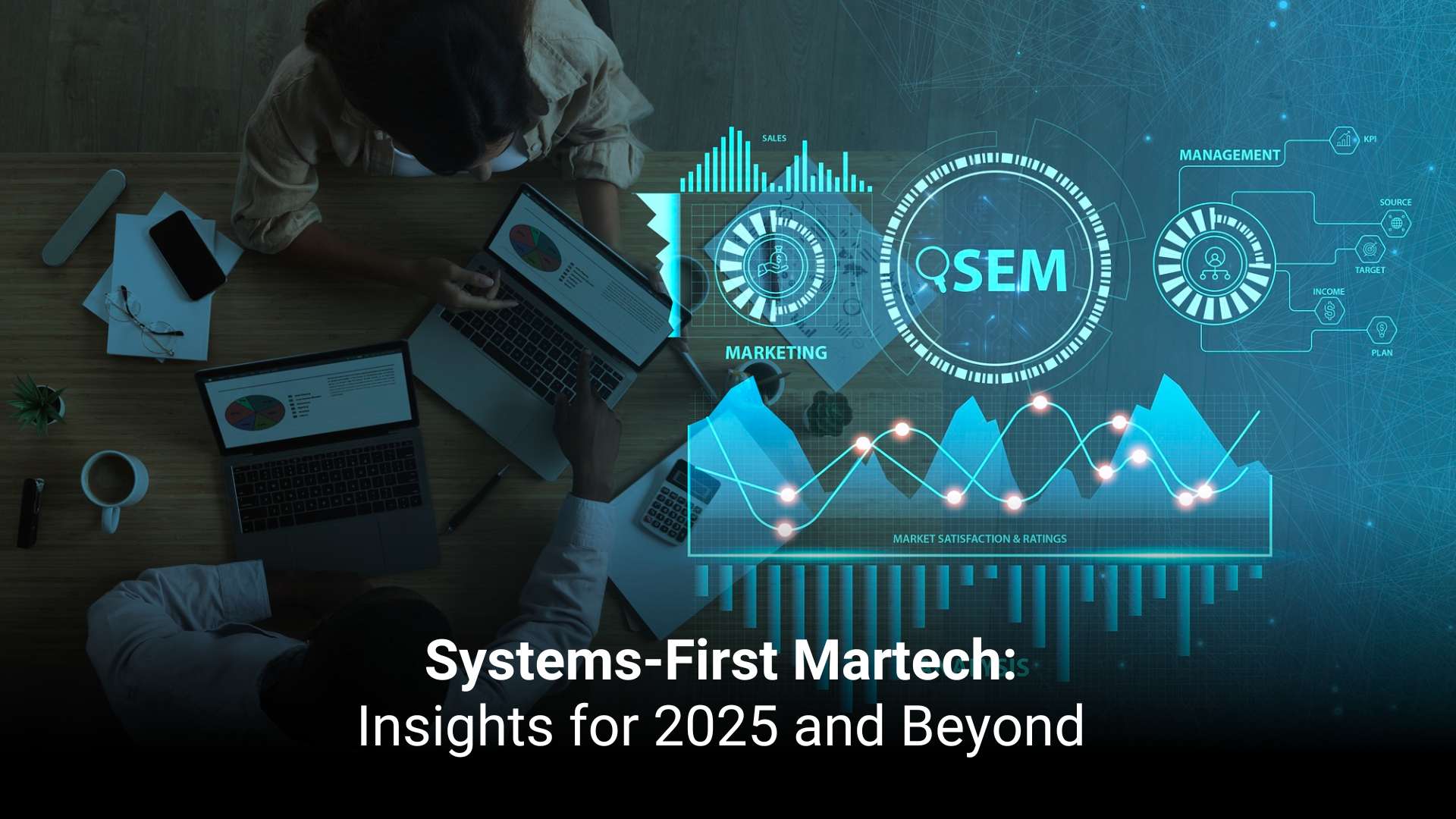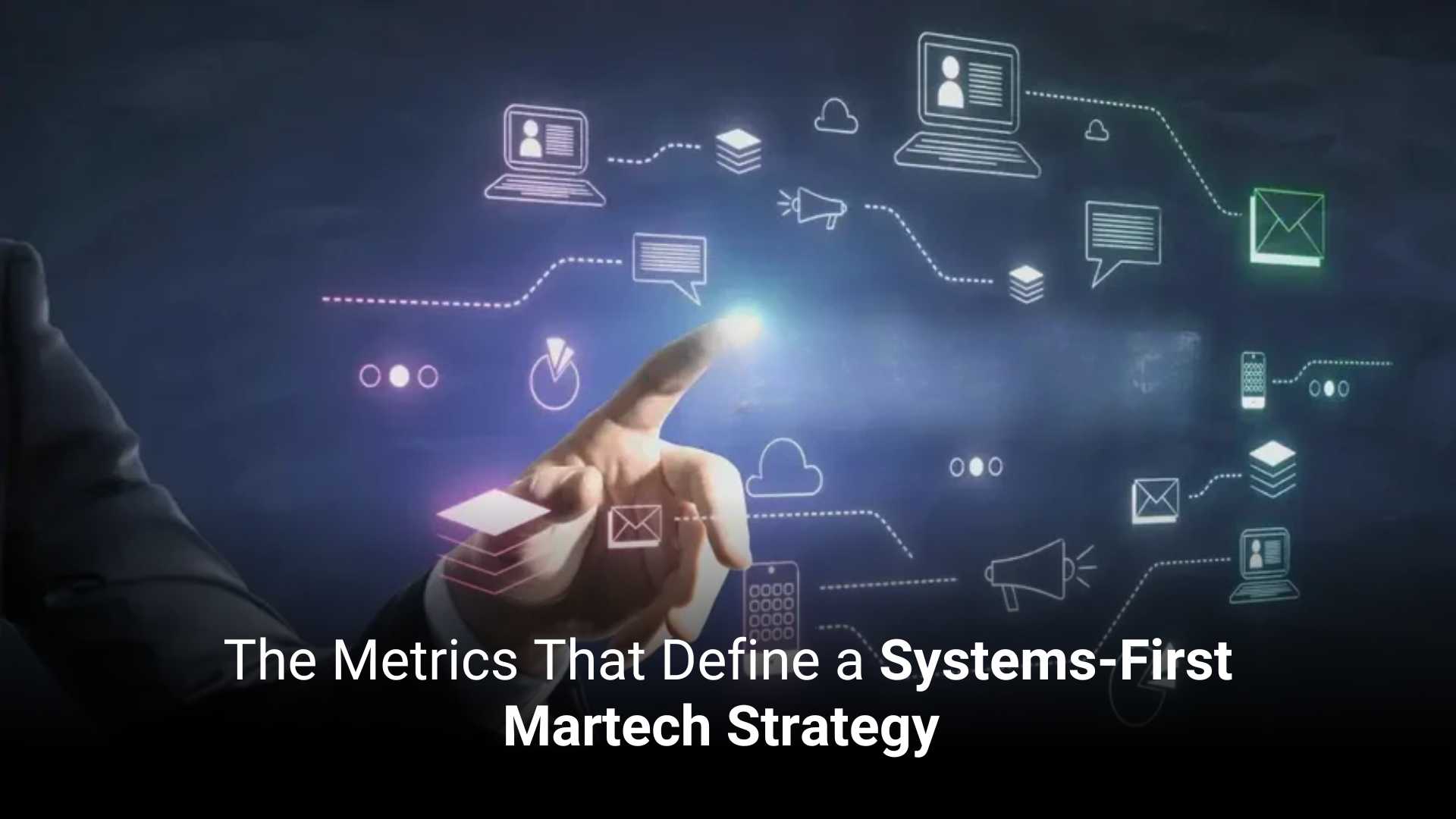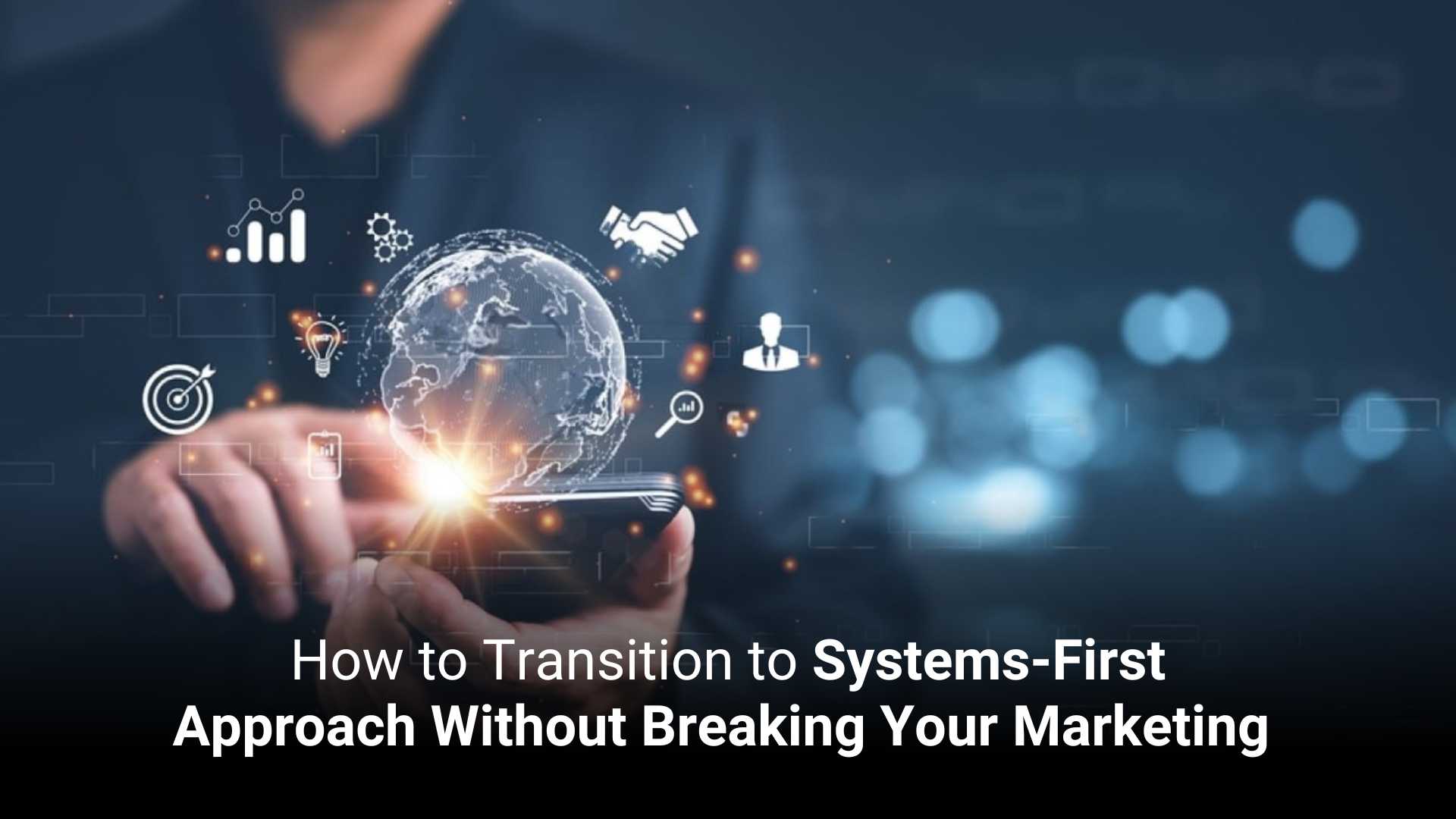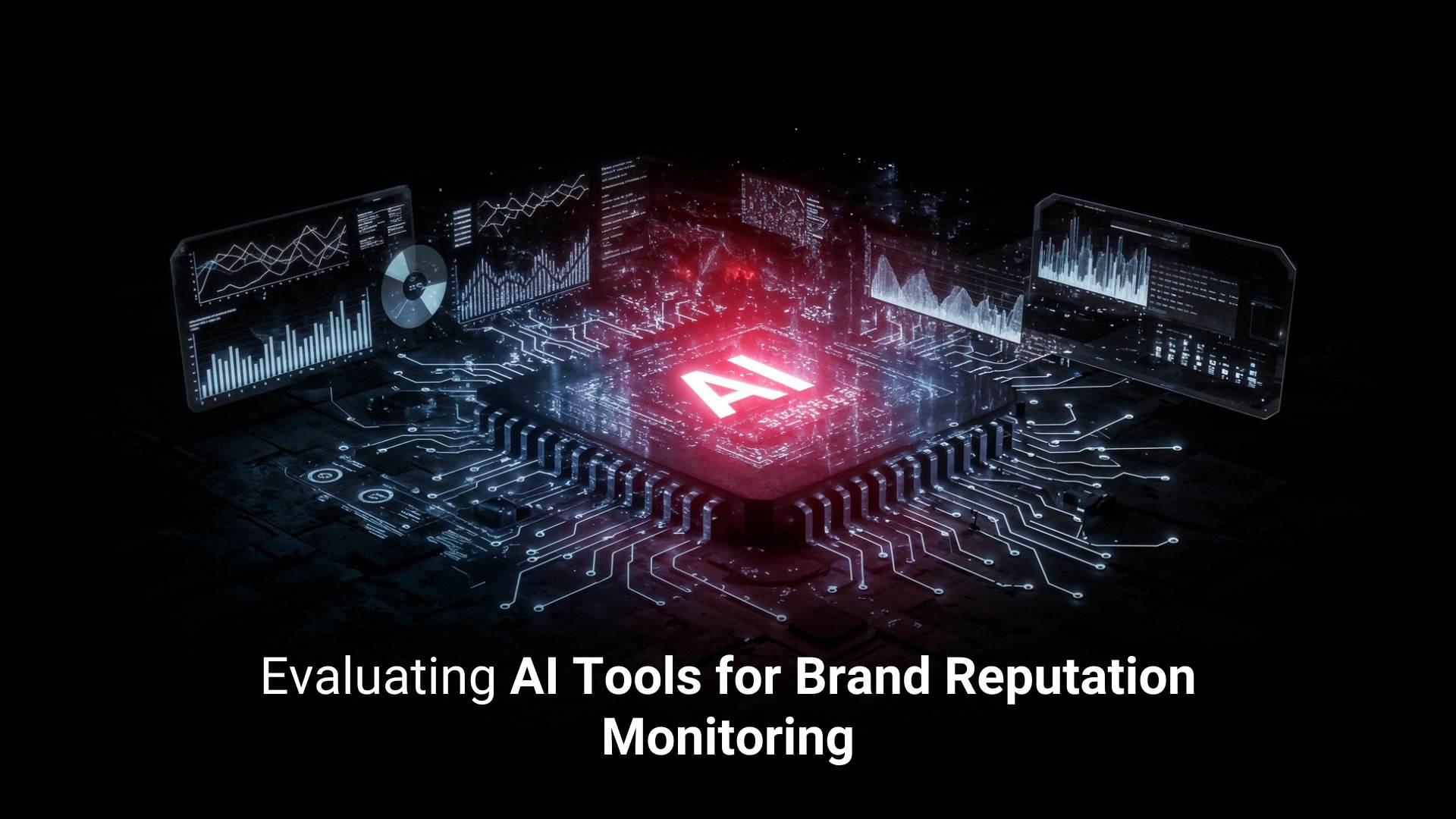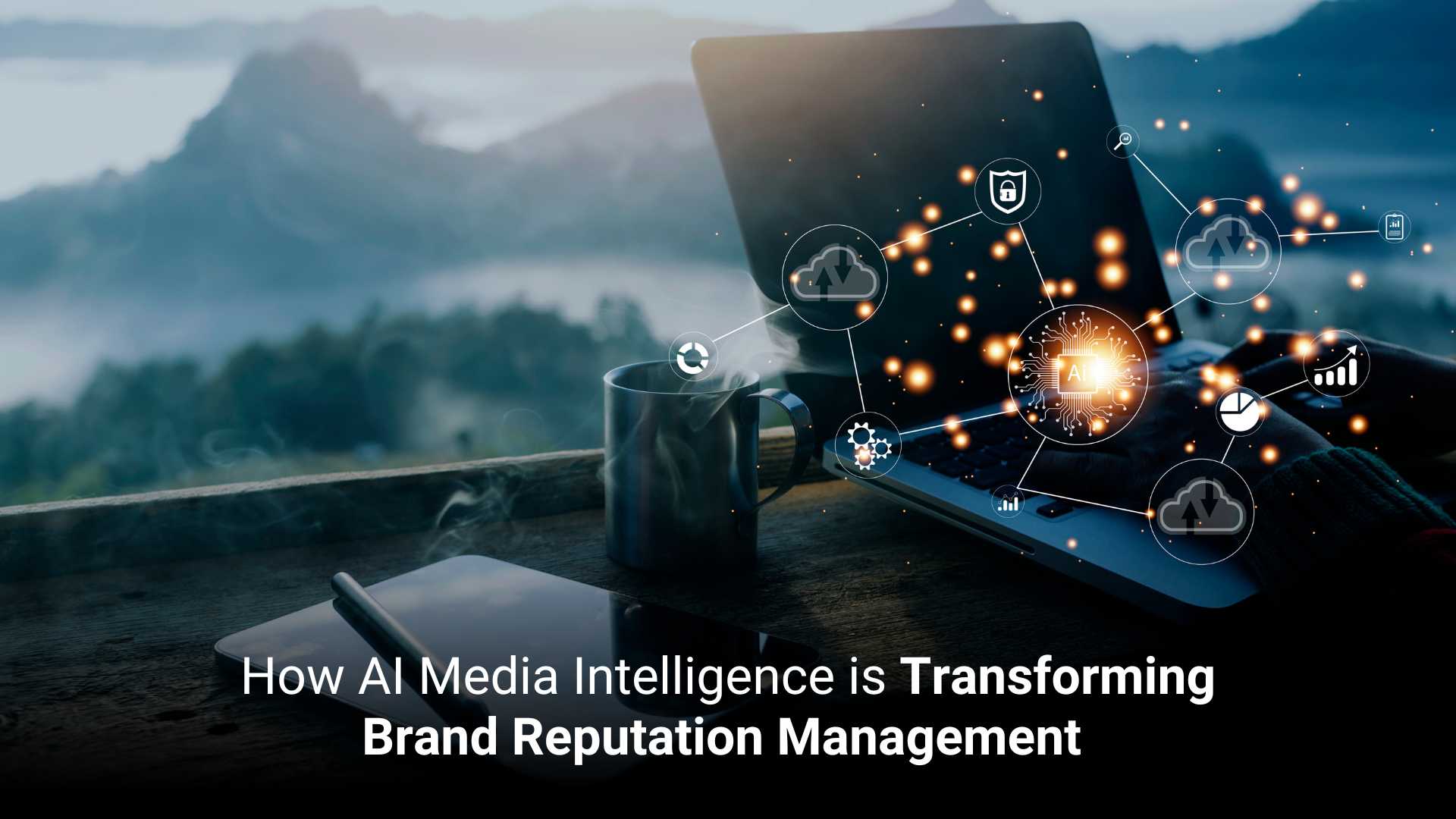
Featured Articles
The Rise of Intelligent Automation: How It Empowers Teams
artificial intelligence15 Oct 2025
A marketing team is closing its quarter. Instead of spending time on spreadsheets, they use Intelligent Automation, which predicts delays and recommends corrective actions. It frees them to focus on strategy rather than workflows. This shift is shaping how organizations manage their workflows with automation.
Intelligent Automation combines Artificial Intelligence (AI), Machine Learning (ML), and Robotic Process Automation (RPA). It brings adaptability and decision-making into the mix. It learns, reasons, and improves over time. For example, an intelligent automation bot can analyze trends, flag anomalies, and even suggest negotiation opportunities.
This article talks about how intelligent automation empowers marketing teams.
How Can Organizations Identify Processes Best Suited for Automation
Here’s how organizations can identify the processes for Intelligent Automation.
1. Target Repetitive Processes
Processes that follow a pattern or require repetitive effort are ideal candidates.
Example: In finance, invoice data entry or purchase order matching can be automated through intelligent automation.
2. High-Volume Transactions
Tasks that occur frequently consume many hours. Automating these transactions delivers high productivity.
Example: In supply chain management, processing vendor updates can be streamlined through AI automation.
3. Compliance-Heavy Workflows
Manual data handling often leads to error, compliance risk, or audit challenges. Using intelligent automation helps to keep pace with it.
Example: Insurance firms use intelligent automation to verify claims, validate policy details, and ensure regulatory compliance.
4. Data-Driven Processes
Processes that analyze structured or unstructured data can benefit from intelligent automation.
Example: In sales, AI lead qualification automates scoring, predicts conversion, and routes leads with accuracy and speed.
5. Customer Experience
Automation that improves customer service directly enhances customer experience.
Example: In IT services, intelligent automation can triage support tickets, recommend solutions, and even trigger alerts to reduce downtime.
6. Cross-Departmental Processes
Workflows that span finance, HR, or operations create bottlenecks when siloed. Intelligent automation can unify these systems for collaboration.
Example: Automating contract approvals across legal and procurement helps shorten deal cycles.
7. Assess ROI
Every initiative should be measured by its value relative to its implementation. Starting small with scalable processes allows quick wins and organizational buy-in.
How Does Intelligent Automation Fit into Digital Transformation Strategies
Here’s how intelligent automation fits into a modern digital transformation roadmap.
1. Acts as the Engine for Operational Excellence
Intelligent automation eliminates inefficiencies and enhances accuracy, which are essential pillars of digital transformation.
Example: In logistics, intelligent automation optimizes route planning, automates shipment updates, and predicts delivery delays.
2. Bridges Data Silos Across the Organization
Intelligent automation connects tools and departments, creating unified, real-time data ecosystems.
Example: A global manufacturer can use automation to integrate data from procurement, finance, and production systems, giving a single view of operations.
3. Enhances Customer Experience
Digital transformation is incomplete without customers, and intelligent automation makes personalization scalable.
Example: In SaaS, intelligent automation can tailor onboarding workflows, automate support responses, and provide predictive insights on customer needs.
4. Accelerates Innovation and Time-to-Market
By automating repetitive work, teams can focus on innovation, design, and growth.
Example: A product development team can use AI automation to analyze user feedback and market data, enabling data-informed product launches.
5. Strengthens Governance and Compliance
As organizations scale, maintaining compliance becomes critical. Intelligent automation provides the expertise to keep pace with compliance laws.
Example: In finance, intelligent automation ensures real-time monitoring of transactions, reducing risks and errors.
6. Powers Data-Driven Decision Making
AI systems continuously learn and adapt, transforming raw data into strategic insights.
Example: In marketing, intelligent automation analyzes engagement patterns to recommend optimal campaign timings and channels, enhancing ROI.
7. Enables Scalable Growth
Intelligent automation scales across functions from HR and supply chain to customer success, aligning technology investments with business outcomes.
How Does Intelligent Automation Enhance Team Collaboration and Decision-Making
Here’s how intelligent automation enhances collaboration and decision-making in organizations.
1. Real-Time Insights for Faster Decisions
AI automation processes datasets and generates insights, helping teams make informed decisions without delays.
Example: A sales team uses AI automation to analyze CRM data, predict buying intent, and recommend actions during deal cycles.
2. Enhances Cross-Functional Collaboration
By automating coordination tasks, teams can focus on strategy rather than administrative follow-ups.
Example: In project management, intelligent automation can assign tasks, update dashboards, and flag risks, ensuring all teams stay aligned on objectives and timelines.
3. Improves Knowledge Sharing and Transparency
Automation platforms capture, document, and distribute insights across the organization, reducing dependency.
Example: In a consulting firm, intelligent automation can document client insights, tag relevant knowledge assets, and make them available to teams.
4. Supports Strategic Work
By removing repetitive workflows, intelligent automation frees teams to focus on creative problem-solving, innovation, and relationship management.
Example: In talent acquisition, intelligent automation can screen candidates and schedule interviews, allowing teams to focus on cultural fit.
5. Combine Human Judgement with Machine Efficiency
While automation excels at precision and speed, it lacks context and empathy, areas where you require human oversight.
Example: In credit risk management, intelligent automation can analyze financial statements and predict risk levels, but final decisions about extending credit still rely on a manager’s experience.
Conclusion
The rise of Intelligent Automation (IA) marks a defining shift in how organizations work, innovate, and grow. It empowers teams to focus on creativity, strategy, and impact. The power of intelligent automation lies in its ability to create synergy, where Machines bring scalability, accuracy, and consistency, and humans bring judgment and empathy.
Reimagine your workflows, empower your teams, and embed intelligent automation into your strategy. It is not about choosing between humans and machines; it’s about building teams that work together.
Why Implementing Ethical AI Pays Off
artificial intelligence7 Oct 2025
A financial services firm launches an AI customer service platform designed to reduce TAT and enhance personalization. The tool begins making recommendations but discriminates against specific segments. It draws scrutiny from regulators, sparking customer backlash and forcing the firm to halt operations. Without ethical AI, innovation can quickly turn into liability.
Adopting ethical AI delivers several benefits. First, it safeguards brand reputation. An organization that is known for deploying responsible AI earns the confidence of its customers, partners, and regulators. Second, ethical AI reduces risk by embedding transparency into the system, thereby lowering exposure to regulatory penalties. Third, it boosts long-term value creation. Teams build adaptable AI systems that can scale globally.
This article discusses the importance of implementing ethical AI.
How Ethical AI Enhances Brand Trust and Customer Loyalty
Here’s how ethical AI helps with brand trust and customer loyalty.
1. Ethical AI Builds Credibility with Stakeholders
When organizations adopt ethical AI frameworks, they signal a commitment to accountability and transparency.
Example: A SaaS provider that uses AI-driven analytics can showcase compliance with data governance standards, reassuring clients that sensitive business data is being handled responsibly.
2. Transparency in AI compliance drives trust
Businesses demand clarity on how AI decisions are made, particularly when those decisions influence outcomes such as vendor evaluation or resource allocation.
Example: A procurement intelligence platform that offers explainable AI models enables clients to understand why certain suppliers are recommended.
3. Ethical AI reduces risk
Deploying ethical AI minimizes the chance of bias, discrimination, or regulatory non-compliance, which could damage brand equity.
Example: A global consulting firm using AI for talent profiling ensures its algorithms are tested for fairness and inclusivity. The approach is appealing to clients who prioritize diversity and inclusivity.
4. Customer Loyalty is Reinforced through Responsible Innovation
Customers prefer vendors who align with their own ethical expectations. Companies that demonstrate AI compliance reinforce shared values, which deepens loyalty.
Example: A financial data provider integrating ethical AI practices into its fraud detection systems wins repeat business from banking clients.
5. Differentiation in a Crowded Market
Businesses choose partners who demonstrate accountability in AI use, making ethical AI a strategic asset.
Example: A marketing automation platform emphasizes its ethical AI governance in client-facing communications, distinguishing itself from competitors.
What Frameworks Guide Responsible AI Use in Organizations?
Here are some of the frameworks that help in ethical AI adoption.
1. OECD Principles on AI
The Organization for Economic Co-operation and Development (OECD) developed one of the first globally recognized sets of principles for ethical AI.
Example: A logistics company uses these principles to guide AI models that optimize supply chains. By adhering to these principles, they ensure that decision-making processes are fair and explainable.
2. EU AI Act
The European Union’s AI Act is a regulatory framework requiring organizations to classify AI applications into high, limited, and low-risk categories. AI compliance is enforced through documentation and human oversight.
Example: A FinTech provider offering AI-driven credit risk analysis aligns its solutions with the EU AI Act, ensuring that clients across Europe can use the product without compliance concerns.
3. NIST AI Risk Management Framework (U.S.)
The National Institute of Standards and Technology (NIST) provides a framework for identifying, managing, and mitigating risks associated with AI systems.
Example: A cybersecurity firm leverages the NIST framework to validate its AI threat detection tools, demonstrating to clients that its algorithms meet the standards of safety and reliability.
4. ISO Standards for AI Governance
The International Organization for Standardization (ISO) is establishing AI-specific governance standards to guide the responsible management of AI.
Example: A manufacturing solutions provider applies ISO standards to its predictive maintenance AI, assuring clients that the technology is built with recognized benchmarks.
5. Ethical AI Governance Boards
Organizations also establish internal governance boards to oversee the responsible adoption of AI. These boards embed ethical principles and regulatory requirements into AI strategies.
Example: A global consulting firm establishes an internal ethics committee for AI, which reviews new AI tools before they are deployed.
What are the Operational Gains of Ethical AI Adoption?
Here’s what organizations gain from ethical AI adoption.
1. Cost Efficiency through Compliance by Design
Embedding AI compliance helps avoid the expense of system upgrades after audits or regulatory interventions. Ethical frameworks streamline audit readiness, cutting down costs.
Example: A financial services provider that designs its AI credit assessment tools with the EU AI Act built in avoids costs.
2. Improved Decision-Making Accuracy
Ethical AI enhances data integrity, making insights more reliable for decisions. Explainable models allow executives to act with confidence.
Example: A supply chain analytics firm employs ethical AI models that flag potential data anomalies. It improves vendor negotiations and inventory planning.
3. Enhanced Agility
Ethical AI systems are adaptable to shifting regulations, client expectations, and cultural norms. Compliance-friendly architectures allow organizations to expand without major operational bottlenecks.
Example: A SaaS platform for cross-border payments builds ethical AI systems with compliance layers, enabling adaptation to different markets.
4. Talent Retention and Productivity
Employees are more engaged when they know the technology they work with aligns with ethical standards. A culture of responsibility boosts morale and productivity.
Example: A global consulting firm embeds ethical AI training into its operations, thereby increasing confidence in its recommendations. This reduces friction and speeds up project delivery.
Conclusion
The question is not whether organizations can afford to implement ethical AI, but whether they can afford not to do so. Trust is the currency of the economy, and ethical AI is the foundation upon which that trust is built.
Audit your AI systems, embed compliance by design, and champion ethical frameworks across your organization. By doing so, you will position yourself as a trusted leader in the marketplace.
Building Ethical AI in Marketing: Trust, Transparency, and Compliance
artificial intelligence30 Sep 2025
Imagine a customer browsing an online website, receiving a personalized recommendation that feels relevant, timely, and respectful of their privacy. Now imagine the opposite: a customer discovers their personal data was used without consent, or that the AI algorithm behind the recommendation excluded specific data. The first scenario builds loyalty; the second erodes trust. This contrast highlights why Ethical AI in marketing is essential.
As AI in marketing becomes the engine behind personalization, targeting, and campaign optimization, brands are walking a fine line between innovation and intrusion. When organizations commit to Ethical AI in marketing, they signal that customer trust is more valuable. Ethical practices ensure that AI is transparent in how it collects and uses data, compliant with regulations such as GDPR and CCPA.
This article will explore how ethical AI fosters trust, transparency, and compliance.
How Ethical AI Differs from Traditional AI Implementations
Below are key differences between ethical AI and traditional AI.
1. Purpose vs. Responsibility
Traditional AI: Designed to maximize KPIs such as clicks, conversions, or revenue, often without considering long-term brand impact.
Ethical AI in marketing: Goes beyond outcomes to ensure responsible use of customer data, aligning campaigns with brand values.
Example: A SaaS firm using AI to push aggressive upsell campaigns might see short-term wins, but an ethical AI approach ensures recommendations are relevant, fostering loyalty.
2. Black Box vs. Transparency
Traditional AI operates as a “black box,” where marketers and customers rarely understand how the results are generated.
Ethical AI: Prioritizes clear communication of how data and algorithms influence outcomes.
Example: An analytics provider can explain why a lead was scored “high priority,” making the process auditable for both sales and compliance teams.
3. Data Utilization vs. Data Protection
Traditional AI: Collects and processes massive data sets, sometimes with little regard for consent or privacy.
Ethical AI: Respects data governance policies, ensures compliance with GDPR/CCPA, and uses data only with consent.
Example: Instead of scraping third-party contact databases, a marketing platform uses opt-in intent data for outreach.
4. Efficiency vs. Fairness
Traditional AI: Focuses on optimization, which can introduce bias or exclude specific segments.
Ethical AI: Actively monitors for bias, ensuring fair targeting across demographics.
Example: A cloud services company ensures its AI-driven ad campaigns don’t favor large enterprises while neglecting SMEs.
5. Compliance as an Afterthought vs. Built-In Compliance
Traditional AI: Addresses compliance only when issues arise, risking fines or reputational damage.
Ethical AI: Embeds compliance frameworks into system design, reducing risk while building resilience.
Example: A FinTech firm integrates compliance checks directly into its AI-driven campaign automation tools.
What Does “Trust in AI” Mean for B2B?
Below are key dimensions of what trust in AI means for B2B.
1. Insights That Drive Decisions
Trust in AI means confidence that these insights are accurate and not skewed by flawed data or hidden biases.
Example: A SaaS vendor using AI-driven content recommendations must ensure that suggested resources are relevant, not simply optimized for metrics.
2. Transparency in Data Use
Trust grows when clients understand how their data is collected, stored, and applied. In B2B, where relationships hinge on credibility, opaque AI processes can hinder confidence.
Example: A marketing automation provider discloses to its clients how AI segments audiences, enabling CMOs to justify their campaign strategies.
3. Ethical AI in Marketing Practices
Trust is built when companies demonstrate inclusivity in their targeting. Ethical AI ensures that decision-making avoids bias and discrimination.
Example: A cloud services firm ensures its AI-driven ad targeting does not prioritize large enterprises while excluding SMEs.
4. Consistency Across Channels
AI must deliver consistent experiences across digital touchpoints. Inconsistency erodes buyer trust, while reliable AI helps build it.
Example: A cybersecurity company using AI chatbots for lead qualification ensures prospects receive the same level of accuracy as human interactions.
5. Compliance and Risk Management
For organizations, regulatory compliance is a cornerstone of trust and credibility. AI systems must align with evolving privacy and data protection laws.
Example: A FinTech marketing team that deploys AI for lead scoring integrates compliant data practices into their workflows.
6. Human Oversight
Trust in AI requires that decisions are not fully delegated to machines. Human oversight assures clients that AI supports strategy.
Example: A marketing agency utilizes AI to qualify leads, while maintaining a human review layer to ensure a thorough assessment before passing them to sales.
What Does Transparency Entail in AI Marketing Solutions?
Below are the key dimensions of transparency and how it is part of AI marketing solutions.
1. Explainable Decision-Making
AI-driven recommendations must not feel like “black box” outputs. Transparency entails making these processes explainable to both teams and clients.
Example: A marketing automation platform provides CMOs with the reason why specific accounts are flagged as “high intent,” enabling sales leaders to trust.
2. Visibility into Algorithms and Bias Monitoring
Transparent AI solutions share how algorithms are trained and monitored to reduce bias. It ensures fair targeting.
Example: A cloud services firm demonstrates that its AI campaign engine doesn’t overly favor one industry vertical.
3. Auditable Marketing Processes
Transparency also means creating audit trail that regulators, compliance teams, or executives can review. This builds confidence in marketing practices.
Example: A FinTech company ensures its AI-powered lead qualification logs every decision point to validate adherence to GDPR.
4. Consistent Communication with Clients
Transparent communication assures clients that AI-driven marketing practices align with ethical and legal standards.
Example: A digital marketing agency utilizing AI personalization tools educates clients on how recommendations are generated.
Conclusion
As AI continues to redefine how brands engage with audiences, the conversation is shifting from what AI can do to how AI should be used. Ethical AI is central to ensuring that it delivers value without compromising trust, transparency, or compliance. The future of AI in marketing belongs to those who strike a balance between creativity and conscience, personalization and privacy, and automation and accountability. In doing so, you won’t just stay ahead of regulations, you’ll define your long-term success.
The Hidden Pitfalls of AI in Marketing and How to Avoid Them
marketing23 Sep 2025
A retail brand launches an AI-powered campaign to personalize offers for its customers. Within days, the campaign sparked outrage with customers complaining of biased targeting and invasive personalization. What began as an effort to stand out suddenly spirals into a tarnished reputation. This is what organizations face when they rush to adopt AI in marketing.
Reputation in today’s world is fragile. Customers expect brands to leverage technology responsibly and ethically. Failing to recognize the hidden pitfalls of AI can result in backlash that spreads faster than any campaign ever could. You must balance the potential of AI in Marketing with caution.
This article will explore the pitfalls businesses encounter when integrating AI into their marketing strategies.
What Are the Common Pitfalls of AI in Marketing?
Here are the common pitfalls of AI in Marketing.
1. Over-Personalization and Privacy Concerns
While personalization is a strength of AI in Marketing, overstepping can make customers feel watched rather than valued.
Example: A cloud infrastructure company sent specific ads based on browsing history. It spooked prospects who questioned how their data was being used.
2. Algorithmic Bias
If the training data reflects bias, AI models will amplify it, leading to skewed targeting, exclusion of audiences, or reinforcing stereotypes.
Example: A recruitment platform using AI to promote services excluded mid-sized firms in certain regions because the algorithm was trained on larger datasets.
3. Lack of Human Oversight
Overreliance on automation without human oversight can lead to contextually inappropriate campaigns.
Example: An IT services company used automated chatbots to handle all inbound queries. The bot failed to recognize nuanced enterprise needs, failing.
4. Short-Term Optimization vs. Long-Term Brand Impact
AI tends to optimize for clicks, conversions, or immediate ROI. Without strategic alignment, this can undermine brand positioning and customer relationships.
Example: A cybersecurity vendor ran AI-optimized ads that favored aggressive messaging because it drove high CTR. It diluted the company’s reputation as a trusted partner.
5. Integration Challenges
Deploying AI in marketing without aligning it with existing workflows creates silos and inconsistent customer experiences.
Example: A logistics firm implemented an AI campaign tool, but it wasn’t integrated with sales CRM. The handoff to sales happened late, causing friction across teams.
Who Is Responsible for AI Missteps in Marketing?
The following teams are responsible for AI missteps in marketing.
1. Leadership
CMOs are accountable for how AI in Marketing is deployed. They set the strategy, oversee alignment, and ensure AI tools serve both business goals and customer trust.
Example: A SaaS company’s AI engine started sending aggressive upsell messages to long-term clients. The leadership failed to establish transparent governance around the tone and frequency of communication.
2. Data & Analytics Teams
These teams manage data. If data is biased, incomplete, or mismanaged, AI outcomes will be flawed.
Example: A FinTech firm trained its AI on outdated transaction data, leading to irrelevant campaign recommendations.
3. Technology Vendors
External AI solution providers share accountability for the accuracy of their platforms. Vendors must disclose risks and limitations upfront.
Example: A manufacturing solutions provider relied on a third-party AI tool for lead scoring. When the tool misclassified high-value accounts, it led to a flawed model.
4. Compliance Team
With rising scrutiny around privacy, compliance officers must ensure that AI in Marketing adheres to industry regulations.
Example: A healthcare services firm used AI to personalize outreach but overlooked HIPAA compliance. The compliance team failed to audit AI usage before deployment.
5. Executive Board
The C-suite and board share accountability for oversight and investment in responsible AI practices.
Example: An IT consulting firm faced backlash when its AI-driven ad campaign excluded SMBs, harming its inclusivity reputation.
When Do AI Tools Fail in Marketing Campaigns?
Here are the scenarios in which AI tools fail marketing campaigns.
1. When Algorithms Optimize for the Wrong Metrics
AI often focuses on immediate results, such as clicks or form fills, while overlooking long-term brand equity and relationship-building.
Example: A cybersecurity company ran AI-driven ad campaigns that favored messaging because it drove high engagement. While conversions rose initially, the brand’s credibility suffered over time.
2. When AI Is Poorly Integrated Across Systems
Without seamless integration between marketing automation, CRM, and sales tools, AI insights remain siloed and underutilized.
Example: A logistics firm adopted AI to predict lead quality. But since the AI platform wasn’t connected to the sales pipeline, leads went untouched, causing friction.
3. When Models Lack Continuous Training
Market dynamics shift rapidly. AI models that are not retrained frequently fail to stay relevant.
Example: A consultancy relied on an old AI-driven content engine to recommend topics. It continued to push outdated themes, making the firm appear behind the curve in thought leadership.
How Can Marketers Avoid the Hidden Pitfalls of AI?
Here’s how marketers can avoid the pitfalls of AI in marketing.
1. Define the Right Success Metrics
Focus on metrics that reflect long-term brand equity and customer lifetime value.
Example: A consultancy adjusted its AI ad campaigns to optimize for account engagement and pipeline growth.
2. Ensure an Ethical Use
Communicate with prospects about how data is collected and used. Avoid personalization tactics that feel invasive.
Example: A healthcare solutions firm discloses how AI tailors its outreach. It strengthens trust and protects compliance standards.
3. Prioritize Data Quality and Governance
Invest in clean, accurate, and updated datasets before deploying AI in Marketing. Establish governance policies to reduce bias and gaps.
Example: A SaaS provider cleaned and enriched its CRM data before implementing AI-driven lead scoring.
4. Train and Retrain Models Regularly
AI models must evolve with market dynamics. Schedule regular training to avoid irrelevant outputs.
Example: A cybersecurity vendor trains its AI-powered content recommendation engine quarterly to reflect new threat landscapes.
Conclusion
The cost of failure is more than wasted spend; it can mean reputational damage, lost trust, and regulatory scrutiny. The way forward for success with AI lies in balance. Companies that get this balance right will not set new benchmarks for customer engagement, loyalty, and trust.
Let’s start the conversation on how to avoid the hidden pitfalls and turn marketing into a driver of sustainable business impact. Those who approach it with discipline will thrive; those who rush without governance risk falling victim to their own technology.
AI in Marketing 2025: What Leaders Need to Know About Pitfalls
artificial intelligence16 Sep 2025
A global brand launches a new AI-powered campaign designed to personalize every customer touchpoint. At first, the results look promising, but within weeks, issues begin to surface. Customers complain about invasive targeting, red flags about data usage, and reputational damage. The innovative leap becomes an overlooked risk of AI in marketing.
The danger lies in the illusion of efficiency. AI systems can crunch data, generate content, and predict consumer behavior. But without oversight, they can deliver flawed insights, alienate audiences, or expose legal risks. For example, an AI tool that misinterprets cultural nuances in global markets could trigger campaigns leading to backlash.
This article will discuss the pitfalls of AI in marketing and why it is essential for marketers.
What Pitfalls Leaders Must Anticipate in AI-Driven Marketing
Below are the AI pitfalls that leaders must anticipate.
1. Over-Personalization Leading to Customer Fatigue
In B2B marketing, where buying cycles are long and involve multiple decision-makers, excessive personalization can feel intrusive.
Example: A SaaS provider uses AI to bombard every stakeholder at a client firm with targeted emails based on role-specific data. The approach overwhelms decision-makers, leading to disengagement.
Takeaway: Ensure the personalization respects context and cadence. Build oversight mechanisms to strike the right balance.
2. Bias in Algorithms
AI systems learn from historical data, which may carry biases. It can distort lead scoring, campaign targeting, or content delivery.
Example: An IT solutions company trains its AI on past customer data. The system begins prioritizing only leads from industries where the company historically performed well, ignoring other sectors.
Takeaway: Regularly audit training data to eliminate bias and diversify datasets, ensuring expansion into new markets.
3. Compliance and Data Privacy Risks
With rising scrutiny on data usage, mismanaging AI systems can invite regulatory and reputational risks.
Example: A FinTech firm uses AI to predict client creditworthiness based on third-party datasets. Regulators challenge the legality, putting the firm’s compliance at risk.
Takeaway: You must ensure governance frameworks align with evolving data privacy regulations.
4. Over-Reliance on Automation
AI-driven marketing automation can streamline campaigns, but unchecked reliance reduces human oversight.
Example: A cybersecurity vendor automates all client engagement emails. When a major security breach hits, clients expect strategy, not AI-generated messages.
Takeaway: Blend AI efficiency with human judgment to preserve credibility.
5. Misinterpretation of Insights
AI can surface insights, but executives risk making poor strategic decisions if context is ignored.
Example: An enterprise solutions provider uses AI analytics to predict churn risk. The system flags several accounts, but leadership fails to consider that the flagged firms are in industries currently facing downturns.
Takeaway: Treat AI insights as directional, not definitive. Human expertise must validate AI outputs.
6. Brand Reputation Risks
Missteps in AI-driven campaigns can go public, resulting in reputational fallout.
Example: A logistics company’s AI chatbot generates offensive responses when queried by potential clients. It is circulated on LinkedIn, damaging credibility.
Takeaway: Continuous monitoring and contingency planning are essential to safeguard brand equity.
Why Ethical AI is a Competitive Differentiator in B2B
Avoiding AI pitfalls is about building sustainable advantage in markets where trust and credibility matter.
1. Trust as a Growth Lever
Ethical AI builds long-term trust with customers and stakeholders.
Example: A SaaS firm ensures its AI-powered lead scoring is transparent, sharing with clients how data is used.
2. Reduced Risk, Higher Reputation
Ethical practices protect against regulatory penalties and reputational damage.
Example: A FinTech company deploying AI chatbots ensures compliance with GDPR and CCPA.
3. Bias-Free Market Expansion
Unchecked AI often replicates bias, limiting opportunities. Ethical AI removes these barriers.
Example: An IT solutions provider audits its AI to avoid bias in lead generation. Instead of over-prioritizing markets, it enters emerging sectors.
4. Stronger Brand Differentiation
Ethical AI positions a brand as responsible and customer-first.
Example: A logistics technology firm uses ethical AI to optimize supply chains without misusing customer data.
5. Sustainable AI ROI
Short-term AI gains can collapse if pitfalls are ignored. Ethical AI ensures scalability.
Example: A cybersecurity vendor that balances AI automation with human oversight helps client communication during crises.
How CMOs Can Future-Proof Measures Before AI Adoption
Below are steps CMOs should prioritize.
1. Establish Clear Governance Frameworks
AI decisions impact customer trust, data usage, and compliance. Without governance, minor errors can escalate into costly missteps.
Example: A SaaS provider formed an AI ethics board to review campaign automation rules before rollout.
2. Invest in Data Quality and Integrity
AI is only as strong as the data it learns from. Poor-quality inputs lead to flawed outputs.
Example: A global manufacturing solutions firm ensured all historical customer data was cleaned, standardized, and bias-audited before training its AI-driven lead scoring engine.
3. Balance Automation with Human Oversight
Over-reliance on AI can strip campaigns of context critical in B2B relationships.
Example: A cybersecurity vendor layered human reviews over AI-generated client communications.
4. Plan for Compliance and Regulation
Data privacy and compliance rules are tightening worldwide. Non-compliance can erode brand equity and lead to penalties.
Example: A fintech firm embedded compliance checks into its AI-driven personalization engine, ensuring customer outreach adhered to GDPR and DPDP regulations.
5. Embed Scenario Planning and Testing
AI-driven campaigns must be stress-tested before full deployment.
Example: An IT company simulated its AI-driven account-based campaigns in controlled environments to detect errors like over-personalization.
Conclusion
The competitive advantage lies not in blind adoption, but in disciplined implementation. CMOs must treat AI as a strategic partner, not a turnkey solution. In B2B, where relationships and trust drive revenue, ethical and responsible AI are brand differentiators.
AI defines the future of marketing, but the winners will be the ones who navigate its risks with as much rigor as they chase its rewards. Audit your AI strategies, build your marketing frameworks, and lead with responsibility. Future-proofing your approach today will ensure you avoid the pitfalls and thrive in the opportunities it creates.
Systems-First Martech: Insights for 2025 and Beyond
marketing9 Sep 2025
A global enterprise is running multiple campaigns across regions, with different tools for CRM, analytics, customer engagement, and advertising. Each platform is powerful, but none of them “talk” to each other. Campaign reports take time to consolidate, and by the time insights arrive, market conditions have already shifted. This scenario calls for systems-first MarTech.
The Martech trends demand API-driven integrations, AI embedded in workflows, and unified platforms. It is not about choosing the “best” tool; it’s about ensuring that every tool contributes to growth. For example, customer data platforms (CDPs) act as the central system of the Martech stack, enabling consistent experiences across teams in an organization.
This article will discuss the insights that drive systems-first MarTech.
Systems-First Martech vs Traditional Silos
Here’s how systems-first MarTech differs from traditional platforms.
1. Unified Data Flow vs. Fragmented Data
Each team relies on separate tools resulting in duplicated data for customer insights. In contrast, systems-first marketing has a connected infrastructure were data flows across platforms.
For example, A systems-first Martech stack integrates data from Salesforce and HubSpot through APIs and CDPs, ensuring a single view of the buyer journey.
2. Agility vs Delays in Decision-Making
Traditional silos hinder decision-making by requiring manual consolidation and analysis of data. Systems-first marketing leverages real-time analytics embedded across the system.
A SaaS provider, for instance, can see which campaigns drive pipeline conversions and adjust ad spend. It translates into faster market responses and measurable ROI.
3. Customer-Centric Journeys vs Disjointed Experiences
Siloed Martech results in disjointed customer experiences, where a prospect receives generic emails from sales. With systems-first marketing, data is synced across touchpoints for Personalization.
For example, a manufacturing solutions company can deliver tailored messaging based on a buyer’s stage in the funnel because all signals are captured within a unified system.
4. Scalability vs Complexity
A siloed Martech stack becomes harder to scale. Adding new tools often means more integration and higher operational costs. Systems-first marketing is where new applications plug into the existing ecosystem without disruption. With composable platforms, you can add AI-driven modules without re-architecting the entire system.
5. Strategic Alignment vs Operational Gaps
Traditional silos often result in different teams pursuing different KPIs, leading to misalignment of business outcomes. Systems-first marketing brings alignment through data, workflows, and insights being shared across functions. Marketing attribution, sales pipeline health, and customer success metrics all tie back driving collaboration and accountability.
Why Systems-First MarTech Is Critical for 2025
Here’s why you need to integrate systems-first MarTech.
1. Delivering Personalization
In a siloed setup, Personalization is limited because data doesn’t flow freely. Systems-first marketing connects all buyer signals into a unified system.
A manufacturing company sends tailored content to procurement managers who downloaded a technical guide while simultaneously delivering ROI-focused case studies to CFOs.
2. Future-Proofing Through Composable Architecture
AI tools and API-driven platforms will dominate the MarTech landscape. Systems-first marketing will allow businesses to plug innovations into their ecosystem without disruption.
For a financial services firm, this means adopting a new compliance-focused analytics module without rebuilding the entire stack.
3. Driving Strategic Alignment Across Revenue Teams
Systems-first marketing ensures shared data and performance metrics. An enterprise solutions provider, for example, can align campaign attribution, pipeline velocity, and customer retention around one system.
4. Competitive Advantage in the Market
Organizations that fail to adopt systems-first marketing will struggle with inefficiencies and poor customer experiences. Systems-first marketing will create seamless journeys and scale efficiently, turning Martech into a strategic growth driver.
Why Scalability and Cross-Channel Consistency Are Crucial for B2B
Here’s why you need to consider scalability and cross-channel consistency.
1. Meeting the Demands of Complex Buyer Journeys
The purchase cycle involves multiple stakeholders and repeated engagements across different channels. It becomes overwhelming due to the volume of touchpoints. Systems-first marketing ensures that campaigns scale, handling buyer interactions while maintaining relevance.
For example, an IT solutions provider engaging with CIOs, procurement heads, and technical teams can deliver consistent messaging across email, webinars, LinkedIn ads, and sales follow-ups.
2. Consistency Builds Trust Across Decision-Makers
Finance leaders want ROI clarity, while operations teams look for efficiency gains. If you deliver conflicting messages, credibility will erode. A unified CDP has a consistent brand voice. For instance, a SaaS provider selling ERP solutions can ensure that a CFO sees performance benchmarks while a CTO sees technical scalability, all under the same narrative.
3. Operational Efficiency Through Integrated Systems
Scaling campaigns without consistency increases costs. Marketing spends time reconciling data and fixing integration gaps, rather than focusing on strategy. Automation is a critical enabler of efficiency.
For example, a manufacturing company running ABM across target accounts can automate reporting, budget reallocation, and performance optimization.
4. Scalability Ensures Future Growth Doesn’t Outpace the System
As you expand into new markets, siloed Martech stacks often break under pressure. Systems-first marketing is designed to scale with business growth. A financial services firm entering new regions builds its stack to replicate workflows, adapt local compliance rules, and roll out region-specific campaigns.
Conclusion
Systems-first Martech is the difference between reacting to market shifts and anticipating them, between efficiency and impact. The question for leaders is how quickly they can make the transition. The organizations that act now will thrive, while those that delay risk will be left behind. Audit your Martech stack, identify the silos, and invest in building a systems-first stack. The future will reward speed and consistency, making sure your organization is ready to lead.
The Metrics That Define a Systems-First Martech Strategy
marketing2 Sep 2025
Your marketing team invests in an automation platform. Campaigns launch faster, leads flow into the funnel, and analytics look promising. But a few months in, the picture begins to change. The sales team complains of inconsistent lead quality, and customer retention is not happening. What went wrong? The problem is the absence of a systems-first marketing approach that connects every team into one engine.
However, embracing systems-first marketing is also about measurement. It requires focus on KPIs that validate the business value. Without clear metrics, it is challenging to track clicks or impressions and understand their impact on revenue, customer lifetime value, or operational efficiency.
This article will discuss the metrics that define systems-first marketing.
Why Metrics Matter in a Systems-First Approach
Here's why metrics are important for a systems-first approach.
1. Metrics Provide Proof of Business Impact
Metrics ensure that your MarTech strategy demonstrates how campaigns directly contribute to revenue, pipeline growth, and customer lifetime value.
Example: A SaaS firm adopted systems-first metrics by linking campaign touchpoints to closed-won deals. It justified budget allocation and revenue contribution.
2. Metrics Align Marketing with Business Goals
Systems-first marketing connects outcomes to broader business goals such as sales velocity and retention. Metrics provide the alignment that marketing is driving measurable impact across the organization.
Example: A cybersecurity company integrated metrics with CRM and ERP data to enhance operational efficiency. By aligning KPIs to pipeline velocity and ARR growth, they were able to justify marketing investments.
3. Metrics Expose Gaps in Data Flow and Integration
Metrics reveal where bottlenecks exist. Without measuring these, you cannot identify integration failures that can harm customer experience.
Example: A manufacturer discovered that 20% of leads were being lost due to misalignment between their CRM and automation tools. Tracking metrics allowed them to fix the pipeline.
4. Metrics Strengthen Customer-Centric Decision Making
Metrics enable leaders to assess the effectiveness of engagement, personalization, and retention strategies across various touchpoints.
Example: A logistics provider used engagement and retention metrics to identify that webinar-driven leads had the highest retention rates.
Core Metrics That Define a Systems-First Martech Strategy
Below are the core metrics you should monitor to ensure your strategy delivers value.
1. Funnel Velocity and Conversion Ratios
What to Measure: Time taken for leads to progress from awareness to opportunity to closed, as well as stage-to-stage conversion percentages.
Why It Matters: The metrics will tell how quickly qualified leads move through the pipeline. Measuring funnel velocity highlights friction points.
Example: A cloud infrastructure provider tracked conversion ratios across campaigns. They identified that webinars produced a faster pipeline acceleration than whitepapers, leading to a realignment of the budget.
2. Campaign Deployment Metrics
What to Measure: Average time to launch a campaign and percentage of campaigns fully automated.
Why It Matters: Systems-first marketing emphasizes speed and scalability through automation and integrated workflows.
Example: A professional services firm reduced campaign launch cycles by measuring time-to-launch and identifying where automation could replace manual tasks.
3. Marketing-Sourced and Influenced Pipeline Contribution
What to Measure: Percentage of pipeline sourced directly by marketing; influenced pipeline from multi-touch campaigns.
Why It Matters: Leaders need to understand how much pipeline and revenue are generated from marketing efforts.
Example: A cybersecurity company demonstrated that multi-channel ABM campaigns influenced 40% of closed deals. These metrics secured more marketing budgets.
4. Customer Lifetime Value (CLV) and Retention Metrics
What to Measure: Average CLV per segment; churn rate; renewal rate; expansion revenue.
Why It Matters: Systems-first marketing ensures that the technology ecosystem supports retention, upselling, and long-term customer value.
Example: A SaaS provider tracked CLV across customer data and discovered accounts engaged through personalized onboarding campaigns had higher lifetime value.
5. Attribution and Multi-Touch Engagement Metrics
What to Measure: Attribution models (first-touch, last-touch, multi-touch); engagement rates across integrated channels.
Why It Matters: A systems-first approach ensures that attribution models are consistent, accurate, and relevant to the buyer's journey.
Example: A logistics technology firm transitioned from last-touch attribution to multi-touch modeling and discovered that LinkedIn campaigns had previously influenced deals that were previously credited only to email.
6. Return on Investment (ROI)
What to Measure: ROI for Tech Stack; cost per lead by system; technology utilization rates.
Why It Matters: Leaders need clear visibility into whether the MarTech stack is producing a return.
Example: An industrial manufacturing company discovered underused platforms consuming 18% of their MarTech budget. By consolidating tools and tracking ROI, they cut costs.
How to Build a Measurement Culture in Systems-First MarTech Strategy
Below are the practices leaders should adopt to embed measurement into everyday marketing operations.
1. Make Metrics a Leadership Priority
When executives request KPIs tied to business outcomes, teams learn to connect campaigns with revenue, retention, and operational efficiency.
Example: A FinTech enterprise restructured its quarterly business reviews to focus on pipeline contribution and customer lifetime value.
2. Establish Shared Dashboards Across Teams
Shared dashboards ensure marketing, sales, and operations all work from the same performance lens.
Example: A logistics provider created a cross-departmental dashboard linking CRM and marketing automation data. It improved pipeline accountability.
3. Integrate KPIs Into Daily Decision-Making
Metrics should guide real-time decisions. Leaders must encourage teams to use data in planning, budgeting, and campaign optimization.
Example: An IT services firm embedded KPI reviews into weekly meetings. Teams shifted budgets when engagement metrics revealed underperforming channels.
4. Balance Short-Term Wins with Long-Term Value
A healthy measurement culture avoids chasing quick wins at the expense of sustainable growth.
Example: A SaaS provider combined metrics on trial conversions with renewal rates to optimize their business strategy. It revealed that campaigns driving high sign-up volumes were not sustaining long-term retention, prompting a shift in strategy.
Conclusion
Without measurement, even the most effective MarTech stack risks becoming disconnected from its goals. With the right metrics, marketing becomes accountable for the business outcomes. Audit your current KPIs, identify gaps in alignment with business goals, and build a measurement framework. You will not only outperform competitors; your marketing will become a driver of growth.
How to Transition to Systems-First Approach Without Breaking Your Marketing
marketing25 Aug 2025
Your marketing team is in the middle of a major campaign. Suddenly, the reporting dashboard crashes, workflows fail, and data syncing across platforms is not happening. The team scrambles, but leads are missed, and campaigns lose Momentum. Many businesses face this issue when their marketing engine is built on scattered tools instead of a scalable system.
Transitioning to systems-first marketing doesn't mean hitting pause on your campaigns. You need to embed marketing automation into daily workflows such as lead scoring, nurturing, campaign tracking, and reporting. It saves time, and all your team's activity is aligned and measurable.
This article will explore how to transition into a systems-first framework without disrupting marketing.
What is Systems-First Marketing?
Systems-first marketing prioritizes structure and process before scaling campaigns or adding new tools. Instead of facing every marketing challenge, this approach builds a strong backbone that can support scalable growth.
One of the biggest enablers of systems-first marketing is marketing process automation. Tasks such as lead capture, nurturing sequences, campaign reporting, and pipeline tracking reduce human error and gain visibility into performance.
Systems-first marketing prevents bottlenecks and reduces dependency. It makes performance grounded in sustainable processes. Most importantly, it creates a foundation where innovation runs seamlessly in the background.
The Imperative Behind Going Systems-First Marketing
Here's why you need to go systems-first marketing.
1. Scalability Without Chaos
Marketing campaigns expand faster than the infrastructure. Without strong systems in place, growth leads to errors and inefficiency.
Example: A SaaS company scaling its Demand Gen discovered that manual lead routing caused delays. By adopting systems-first marketing, leads were routed, improving response time.
2. Consistency Across Channels
Buyers interact with brands across multiple touchpoints. Without a unified system, messaging and tracking are inconsistent.
Example: An IT services provider implemented centralized automation workflows for nurturing prospects across geographies, resulting in consistent communication.
3. Operational Efficiency and Cost Reduction
Manual processes consume valuable human resources. By shifting to systems-first marketing, organizations can lower operating costs.
Example: A consulting firm automated tasks like follow-up emails and reporting. This cut down manual work and allowed them to focus on strategy.
4. Future-Proofing the Marketing
A systems-first foundation makes it easier to adopt new tools without breaking existing workflows.
Example: When a cybersecurity company adopted an AI-powered personalization tool, the systems-first approach ensured standardized data flows.
How to Transition Without Breaking Marketing Momentum
Below are the key strategies for transitioning to a systems-first approach.
1. Audit Before You Automate
Start by mapping your current marketing workflows. Identify repetitive tasks, bottlenecks, and areas of manual intervention.
Example: A logistics company audited its lead nurturing workflows and discovered that follow-ups are manual. By automating these processes, they freed up sales without pausing campaigns.
2. Prioritize High-Impact Processes First
Identify the processes that deliver the most impact when automated. This staged rollout reduces disruption while quickly showing value.
Example: A SaaS provider automated lead scoring, ensuring sales never missed hot leads while larger integration projects were still underway.
3. Run Systems in Parallel Before Switching
Before shutting down entirely, run your new systems alongside current processes to validate accuracy and reliability, thereby minimizing risk.
Example: A consulting firm tested its new campaign reporting automation while still maintaining manual reports.
4. Communicate Change Across Teams
Clear communication ensures buy-in and alignment. Regular updates keep teams informed about what's changing and why it benefits them.
Example: An IT services company held monthly leadership briefings to showcase how automation was improving campaign visibility.
5. Leverage Quick Wins to Build Momentum
Highlight early wins to build credibility. Whether it's faster lead response times or improved reporting accuracy, these wins keep confidence in the investment.
Example: A software company reduced campaign setup time after automating asset approval workflows. It helped to secure additional budget for full automation.
6. Measure and Optimize
Systems-first marketing is an ongoing evolution. Track KPIs such as campaign velocity, lead conversion, and cost per acquisition to evaluate impact.
Example: A manufacturing firm monitored lead-to-opportunity conversion rates after automation and discovered an improvement.
Metrics to Track in Systems-First Marketing
The following are the metrics to track in systems-first marketing.
1. Lead Response Time
Measures how quickly sales engage with new leads once they enter the system. It ensures leads are scored, prioritized, and routed.
Example: A SaaS provider reduced response time using automated lead routing, resulting in a lift in conversion rates.
2. Marketing Sourced vs. Influenced Pipeline
Tracks how much pipeline is directly generated by marketing activities. Integrated systems enable leadership to see the impact.
Example: A cybersecurity company used automated attribution models to show that marketing influenced the majority of deals.
3. Campaign Velocity
Evaluates how fast campaigns move from planning to execution. The automation eliminates delays in approvals and reporting.
Example: A consulting firm cut campaign launch time after automating creative approval workflows.
4. Cost per Acquisition (CPA)
Tracks the efficiency of customer acquisition efforts. It reduces manual overhead and operational waste, lowering acquisition costs.
Example: A manufacturing company streamlined email nurturing sequences and reduced CPA within the first quarter.
5. Conversion Rate by Stage
Tracks how prospects move from lead to opportunity to closed deal. No lead is left unattended, increasing conversion consistency.
Example: A logistics solutions provider improved MQL-to-SQL conversion after automating follow-up sequences.
Conclusion
Transitioning to a systems-first marketing approach helps you build a strong, scalable foundation. The real advantage lies in balance: executing today's campaigns while laying down the infrastructure for tomorrow's growth. With a systems-first mindset, your leads will not fall through the cracks or operational bottlenecks. Start with small wins, scale your foundation gradually, and ensure every process strengthens your marketing momentum.
Ready to future-proof your marketing? Start with us!
Page 2 of 19
Most Recent
How to Use Predictive AI to Spot Brand Reputation Risks
MTE Staff Writer
Evaluating AI Tools for Brand Reputation Monitoring
MTE Staff Writer
5 Marketing Strategies to Follow in Black Friday
MTE Staff Writer
Using AI to Measure Brand Reputation Across Channels
MTE Staff Writer
What CMOs Should Know Before Investing in Intelligent Automation
MTE Staff Writer
How Automation Transforms Customer Experience
MTE Staff Writer



